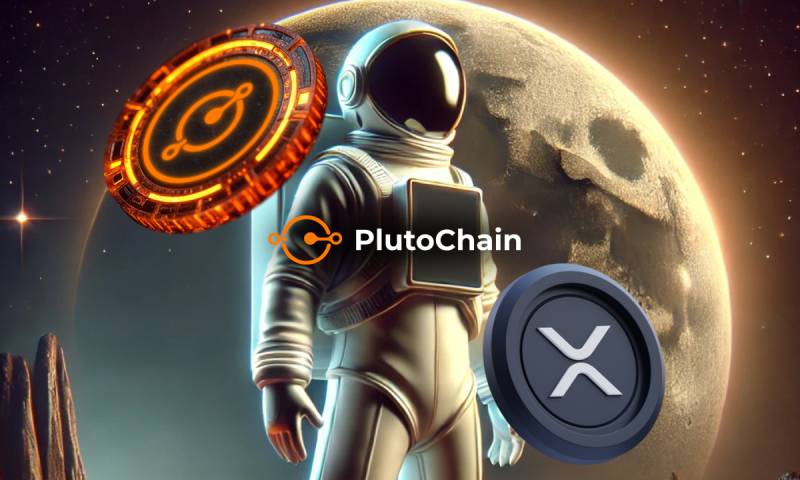 |
|
 |
|
 |
|
 |
|
 |
|
 |
|
 |
|
 |
|
 |
|
 |
|
 |
|
 |
|
 |
|
 |
|
 |
|
Cryptocurrency News Articles
EigenLayer (EIGEN) – Capital Efficiency on A New Level
Feb 04, 2025 at 03:12 am
EigenLayer operates as a decentralized Ethereum restaking and security-as-a-service ecosystem. Its unique structure empowers developers across blockchains in a decentralized manner

EigenLayer operates as a decentralized Ethereum restaking and security-as-a-service ecosystem. Its unique structure empowers developers across blockchains in a decentralized manner, enabling market participants to secure passive rewards. Here’s everything you need to know about investing in EigenLayer (EIGEN) and how it continues to drive innovation in the DeFi sector.
What is Restaking?
At the core of EigenLayer is a restocking protocol. Restaking features have become more popular over the last 3 years due to their added liquidity. A restaking protocol will provide stakers with a liquidity token that can be staked again, driving capital efficiency higher. EigenLayer allows users to stake the same ETH on the mainnet and across other options.
What Problems Does EigenLayer Attempt to Fix?
There's a long list of problems that EigenLayer helps to solve for traders and developers. For one, it helps developers save on startup costs and time. The security-as-a-service (SaaS) feature allows users to stake their tokens to leverage pooled security options.
Pooled security eliminates the need to spend time nurturing a validator community through incentives. Instead, developers can leverage Ethereum’s proven security and stability, creating more user confidence and reducing time and effort across the board.
Lack of Sovereignty
Another issue that EigenLayer's developers sought to eliminate is a lack of sovereignty. Currently, most developers utilize the Ethereum blockchain. As such, they are limited by both the technical and community restraints the network has in place. Sadly, this structure also limits innovation as it makes it difficult to utilize the most advanced blockchains when needed.
EigenLayer enables developers to build using whatever network they feel best suits their application. This approach opens the door for future developments and more customization. This freedom also helps to drive innovation while retaining a reliable security service.
Lack of Interoperability
Interoperability remains a top concern for developers nowadays. It hurts the market when there are islands of data and liquidity that can't be combined and used by the community. EigenLayer supports full interoperability with top-performing networks, including Ethereum. Users can restake their ETH, earn rewards from DeFi protocols, and validate applications on other blockchains using Ethereum's security.
Locked Liquidity
In traditional skating programs, you lock your crypto up for a select period and receive rewards after the time completes. The problem with this approach is that you can’t access the funding if another, more lucrative, option emerges. Restocking protocols help to free up locked liquidity and improve capital efficiency. They accomplish this task by issuing Liquid Restaking Tokens.
High Gas Fees
Another problem that has plagued the crypto market since its early days is gas fees. Even as these fees are decreased, more complex Dapps will require more computational power, adding to the overall gas fee conundrum. EigenLayer provides a low-cost alternative that reduces costs for mainnet and L2 users.
Benefits of EigenLayer
There are several benefits that EigenLayer introduced to users and developers. For one, its decentralized structure prevents censorship and helps to drive innovation by empowering developers to utilize unique and new networks. Additionally, it provides a customizable, robust, and scalable security solution to the market that opens the door for incentivization via commoditized decentralized trust.
Security
Among the top benefits that EigenLayer brings to the market is the ability to restake tokens and gain access to pooled security. This method of securing a dapp or platform eliminates the need to cultivate validators directly. Instead, users can leverage the Actively Validated Services (AVS) to gain access to Ethereum’s proven security protocols.
EigenLayer also provides users with a reliable and easy-to-use self-custody staking feature. As a self-custody restaking protocol, you retain control of your assets during the restaking process, preventing losses due to rug pulls, platform hacks, outages, and other risks.
Increased Capital Efficiency
Capital efficiency can be boosted using EigenLayer’s stacking options. The protocol encourages users to secure passive returns by staking their ETH directly. They can then restake their Liquid Staking Tokens to secure additional rewards. This structure allows you to secure passive income from multiple protocols using the same capital.
How Does EigenLayer Work?
There are several components to the EigenLayer ecosystem that work together to create a robust and incentivized security ecosystem. The project combines a decentralized marketplace, pooled security, multiple tokens, and an AVS system that empowers developers to build more efficiently.
Actively Validated Services (AVS),
Actively Validated Services are offered by nodes in exchange for rewards. These services can include providing support for features like new execution environments, virtual machines, sidechains, data availability layers, oracle networks, bridges, and much more. Notably, stakers select AVSs to delegate their tokens in exchange for rewards. Interestingly, restaked ETH can provide security to multiple AVSs at once.
reStaking
Restakign is a core feature of EigenLayer. To restake, users
Disclaimer:info@kdj.com
The information provided is not trading advice. kdj.com does not assume any responsibility for any investments made based on the information provided in this article. Cryptocurrencies are highly volatile and it is highly recommended that you invest with caution after thorough research!
If you believe that the content used on this website infringes your copyright, please contact us immediately (info@kdj.com) and we will delete it promptly.
-

-

-

-

-

-

-

-

-

- Cryptocurrency prices took a hit from the prospect of a trade war between the U.S. and its major trading partners, with some well-known digital assets and President Donald Trump's own meme coin taking big hits.
- Feb 04, 2025 at 06:55 am
- The price of bitcoin started falling from about $105,000 shortly after Trump announced plans Saturday to start putting large tariffs on goods from Canada, Mexico and China.






























































